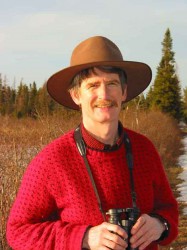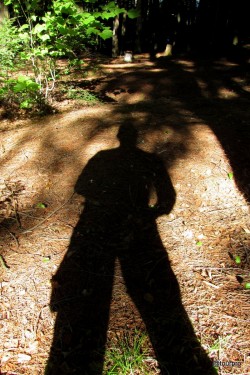AGREEMENT BENEFITS JOBS, BOOSTS LOCAL ECONOMY AND PRESERVES EXPANSIVE FORESTS
KEENE VALLEY, NY – The Nature Conservancy announced a historic land agreement with New York State that supports timber industry jobs, boosts the State’s recreation and tourism economy and, at the same time, preserves 89,000 forested acres concentrated in the geographic heart of the Adirondacks. The agreement transfers a conservation easement of commercial working forest in the Adirondacks once owned by paper manufacturer Finch, Pruyn to New York State.
“This is a great day for all New Yorkers – it’s about finding a healthy balance between nature and people,” said Bill Ulfelder, state director of The Nature Conservancy in New York. “This historic agreement will secure public access to lands, lakes and waterways, many for the first time, creating new recreational opportunities for the public and, at the same time, supporting the economy of the Adirondack region and the entire state. This agreement protects some of the region’s largest intact and biologically diverse lands from commercial and private land development.”
The state’s acquisition of the easement will have a major positive impact on both state and local economies. Protecting this natural land, owned by ATP Timberland Invest, provides a boost to the economy by helping to keep the forest products industry–an industry that supports more than 50,000 jobs and injects $9 billion into the state’s economy every year—both competitive and viable. A related “fiber supply agreement” tied to these lands helps to maintain the century-old link between the property and local manufacturing jobs at the Finch Paper mill, a Glens Falls, NY-based employer of more than 750 workers.
Additionally, protecting this Adirondack property adds immeasurable value to the region as a major travel and recreation destination. Ten million people visit the Adirondack Park annually, supporting one out of every five jobs in the area, and visitors spend more than $1 billion at local inns, restaurants, convenience stores and outdoor outfitters. The easement has the additional benefit of attracting new visitors to the park by securing new public access to lands and waterways, including permanent snowmobile trails widely viewed by local communities as economic lifelines during long winter seasons. New York State paid $30 million for the conservation easement, which includes specific recreation rights to the land, with money allocated for this purpose in last year’s Environmental Protection Fund (EPF). The local communities (27 towns) where the properties lie have all approved this purchase.
“Forests are a true multi-purpose resource,” said Roger Dziengeleski, Vice President and Senior Forester for Finch Paper LLC, who also serves on the boards of the Society of American Foresters and the Empire State Forest Products Association. “This agreement ensures that these forests will continue to provide wood for paper and lumber, homes for a wide diversity of wildlife, four-season recreational opportunities for people and clean air and water.”
“The Adirondacks are repeatedly picked by AAA as New York’s number one destination for leaf peeping,” says Jim McKenna, a representative of the Adirondack Regional Office of Sustainable Tourism. “Many of the lands protected by this agreement are the very places people travel here to see in all of their autumn splendor—helping to increase economic activity to our communities.”
The agreement also protects outdoor traditions such as hunting, fishing and snowmobiling which are important parts of Adirondack culture. According to New York State Snowmobilers’ Association (NYSSA) executive director Dave Perkins, “Snowmobiling generates $800 million in spending per year in New York State. If you look at a statewide map of the trail system, there’s a hole in Essex County, which means we’ve been missing out on a share of that money as a result. The trails we can now use because of this conservation easement are helping to fill that gap in a big way.”
“This easement is a step toward making Newcomb a central hub for snowmobiling and winter recreation. It’s pretty great to get some real economic benefit from it,” said Newcomb Town Supervisor George Canon, who also noted that the trails from Newcomb to Long Lake and to Indian Lake will be open this season and links to the east are in the works.
“Indian Lake has been paying to lease snowmobile trails on an annual basis,” said Indian Lake Supervisor Barry Hutchens. “Now, with the uncertainty associated with year-to-year leasing erased, we see these trails as permanent and valuable assets that can help our struggling winter economy and our town budget appropriations.”
Just as important as the economic benefits of this historic agreement are the environmental benefits of New York’s investment, which include clean air and water. Protecting forests maximizes nature’s filtration capacity, making the water in rivers, streams, ponds and lakes that run through them safer to drink and less costly to treat. More than 270 miles of rivers and streams concentrated near the uppermost reaches of the Hudson River will continue to flow through intact forests as a result of this conservation effort. Forests also filter and clean our air, removing harmful pollutants and providing oxygen.
Conserving the former Finch, Pruyn Forestlands
In recognition of their extraordinary ecological and economic value, the Conservancy purchased 161,000 acres of the Finch forestland in the Adirondacks for $110 million in 2007. The overall conservation plan for the future of the property was developed by the Conservancy and New York State after extensive consultation with local government officials and other stakeholders. The final historic agreement balances economic development, recreational needs, and ecological protections. Key elements of the plan call for more than 90,000 acres to be protected through a working forest conservation easement , 65,000 acres to be transferred over the coming years to New York as new public lands, and 1,100 acres to be set aside for community purposes in Newcomb, Long Lake and Indian Lake. Today’s announcement marks a major milestone in moving the overall plan forward.
“The Adirondack Park is one of the state’s proudest legacies and most notable tourism destinations,” said Michael Carr, executive director of the Adirondack Chapter of The Nature Conservancy. “In developing some of the conservation easement provisions, we followed the lead of local officials who linked the properties with quality of life, business and tourism opportunities. This project illustrates how ecological conservation and economic activity are mutually reinforcing.”





